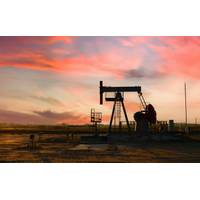North Dakota oil production will get a shot in the arm next month as a pipeline comes online despite opposition by environmental groups and Native Americans, allowing the energy industry to save at least $540 million in annual shipping costs.
The Dakota Access Pipeline gives the state's producers cheaper access to refineries and other customers on the U.S. Gulf Coast.
Market players said they expect this will hasten a revival of output from the Bakken region which fell sharply along with global oil prices during the past two years.
"We're back to growth in the Bakken," Hess Corp Chief Executive Officer John Hess said in a recent interview. The New York-based company has contracts to send roughly half its daily North Dakota output through DAPL. For 2017, Hess has said its Bakken production could grow more than 10 percent.
President Donald Trump approved the $3.7 billion pipeline in February, reversing the prior administration which had blocked it last December with a decision by the U.S. Army Corps of Engineers.
Energy Transfer Partners LP, which operates the 1,100 mile (1,770 km) long DAPL, has begun filling the line with crude and could reach full operating capacity by late April, based on industry estimates.
DAPL "will provide a safer, more environmentally responsible and more cost-effective transportation system to move crude across this country as opposed to truck or rail," said ETP spokeswoman Vicki Granado.
The pipeline will carry about 500,000 barrels of oil per day, more than half of North Dakota's daily output, cutting reliance on riskier rail-cars and reducing transport cost by roughly $3 to $5 per barrel, analysts estimate.
That should help level the playing field between Bakken producers and rivals in other U.S. shale plays, many of which are closer to refineries and other customers.
"Economics for drilling in the Bakken will look better because of DAPL," Rusty Braziel of RBN Energy consultants in Houston, said in an interview.
The state's drilling rig count has jumped 40 percent since early February, when Trump gave final approval to the pipeline. By the end of the year, analysts expect the rig count to rise another 10 percent or more.
DAPL's opponents say they will continue to oppose the line and oil production across North Dakota, which pumps more crude each day than any state but Texas.
"Just because oil flow is pending does not mean that it cannot be stopped by court order, and we have a strong, ongoing case in front of the courts," said David Archambault II, chairman of North Dakota's Standing Rock Sioux tribe, which lives adjacent to the line.
OUTLOOK
Transportation savings from DAPL are a key factor oil companies are considering when deciding whether to boost production, executives, analysts and investors said.
Hess plans to triple the number of drilling rigs it operates in North Dakota this year. The company will move the 30 percent of its existing Bakken production from rail to pipeline once DAPL opens.
Oasis Petroleum Inc, another large Bakken producer, said its 2017 output could rise more than 30 percent. DAPL "is definitely going to give us more options to get our product to market," Oasis Chief Executive Officer Tommy Nusz said in an interview.
Whiting Petroleum Corp, the state's largest oil producer, does not contract for space on DAPL, nor does Continental Resources Inc, the second-largest.
But Continental expects DAPL to ease a transport bottleneck out of the state and open room on other pipelines, allowing it to stop using rail.
Both Whiting and Continental have projected production to rise more than 20 percent this year. The companies did not respond to requests for comment.
North Dakota's oil production fell 13 percent in the last 12 months for which data are available to about 980,000 barrels per day (bpd) due to low prices. While the expected jump in 2017 output likely won't return output to its 2015 peak, it could help statewide production again rise above 1 million barrels per day.
Another reason for rising production is that higher prices have prompted many companies to hedge, or sell forward, some of their output, which bolsters confidence. Whiting and Oasis, for example, have hedged more than half of 2017 production.
But the state's producers say that DAPL's opening, after months of uncertainty, gives them confidence they can ship their product to market.
"We have to have a more pragmatic approach to infrastructure development in this country," said Hess.
Reporting by Ernest Scheyder





